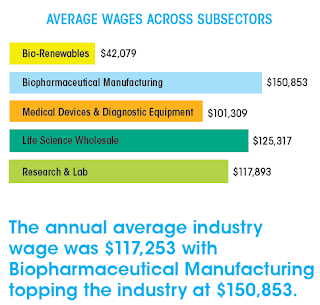A former Harvard University postdoctoral researcher has sued the university for his share of $20 million that Merck & Co. paid Harvard in 2016 to license preclinical compounds to treat leukemia. At the time, the license fee was called the largest ever for a technology developed at Harvard.
The researcher, Alexander Arefolov, worked in the lab of Harvard chemist Matthew Shair between 2011 and 2015. He claims that he was intentionally left off a patent covering the compounds, which are derivatives of cortistatin A.
The patent, which Harvard applied for in 2016, names five scientists, including Shair, as inventors. It details steps to synthesize derivatives of cortistatin A, a complex, difficult-to-isolate natural product from sea sponges...
NB the lawsuit is being filed by the same lawyer that filed suit (and reached a settlement) in the Charest case.
UPDATE 1: According to the Boston Globe:
Arefolov is seeking about $1 million, plus a pro-rated share of future royalties that could be paid by Merck if a drug based on the Harvard technology is approved, according to his attorney, Brian D. O’Reilly.
UPDATE 2: I contacted Dr. Arefolov's lawyer (Brian O'Reilly) and
he provided the lawsuit and related documents. (Google Drive link) Things that I found interesting:
Here are the basic facts, as laid out by Dr. Arefolov:
29. Between 2006 and 2011, Dr. Arefolov and Dr. Shair worked together at Makoto Life Sciences, a biotechnology startup. Dr. Arefolov was a research scientist and Dr. Shair was a Scientific Advisory Board member at the company. During that time, Dr. Arefolov and Dr. Shair worked closely together.
30. In July 2011, Professor Shair invited Dr. Arefolov to accept a visiting scientist position at Harvard.
31. Over the next three months, Dr. Arefolov worked on the Cortistatin A Project. During that time, he made an important breakthrough that had beguiled previous lab members.
32. Seeing Dr. Arefolov’s contribution to the Cortistatin A Project, in October 2011, Dr. Shair offered Dr. Arefolov a position as a post-doctorial scientist to continue his work on the project.
33. Dr. Arefolov accepted the position and continued to work on the project until April 2015.
34. The pay for post-doctorial scientist was substantially less than many industry positions. Part of the allure of taking a position as a post-doctorial scientist in Dr. Shair’s laboratory was the hope that he would receive patent royalties from his work.
35. Dr. Shair repeatedly assured Dr. Arefolov that his work on the Cortistatin A Project was valuable and that he would ensure that Harvard would recognize Dr. Arefolov’s contributions if they were successful in securing a patent and any patent royalties.
39. During the four years Dr. Arefolov worked in Dr. Shair’s lab he worked long hours and dedicated his work exclusively to the Cortistatin A Project. Central to the Cortistatin A Project was the effort to investigate, create, and test new Cortistatin A analogs. Dr. Arefolov’s worked extensively on the investigation and creation of Cortistatin analogs.
And the important bits about money:
62. In multiple conversations with Dr. Shair, Dr. Arefolov inquired about possible patent royalties he could receive from his work on the Cortistatin A Project. Dr. Shair reassured Dr. Arefolov that Harvard would recognize his work. Dr. Shair understood that it was unlikely Dr. Arefolov would agree to a reduced share of the royalties in order to increase Dr. Shair’s share of the royalties.
63. In fact, it was that very reliance on future royalties that Dr. Shair used to convince Dr. Arefolov to stay on as post-doctorial scientist. On multiple occasions, Dr. Shair made statements such as “Alex, the inventors at Harvard University receive 35% of any license fee, if the project is successful – you will receive your fair share.”
I think we should take a moment here and note this story is told from the point of view of the plaintiff, and so Harvard and Professor Shair are going to have a different story.
That said, it's clear to me that Dr. Arefolov was convinced to leave his previous position at a small company in order to work with Professor Shair on the cortistatin project. If you go through the complaint, it sounds like Dr. Arefolov is hanging his hat on that he should have been a co-inventor because he suggested the making of analogs that made it into one of the patent applications. Assuming (a big assumption) that Dr. Arefolov was a co-inventor, it seems very reasonable for him to want relief for being left off the patent and for the 4 years he was convinced to work as a postdoc.
The thing that the documents do not answer is this: why is Dr. Arefolov no longer working for Professor Shair? Who are the other inventors that were put on the relevant patents and patent applications? What share did they get?
(UPDATE 3: see below)
It will be interesting to see what happens next, especially since Dr. Arefolov (and, I presume, Mr. O'Reilly) are also claiming that Professor Shair should have been acting in his role as a fiduciary for Dr. Arefolov. As long time readers of the blog may know,
Mark Charest (and Mr. O'Reilly) did not succeed in this claim against Professor Andy Myers of Harvard.
I look forward to hearing the facts behind this case; until then, students who have made big, commercialize-able discoveries in the laboratory, might want to find out what your university's IP policy is...
UPDATE 3: Professor Shair received an equal share with his co-inventors, after Harvard took their percentage.







